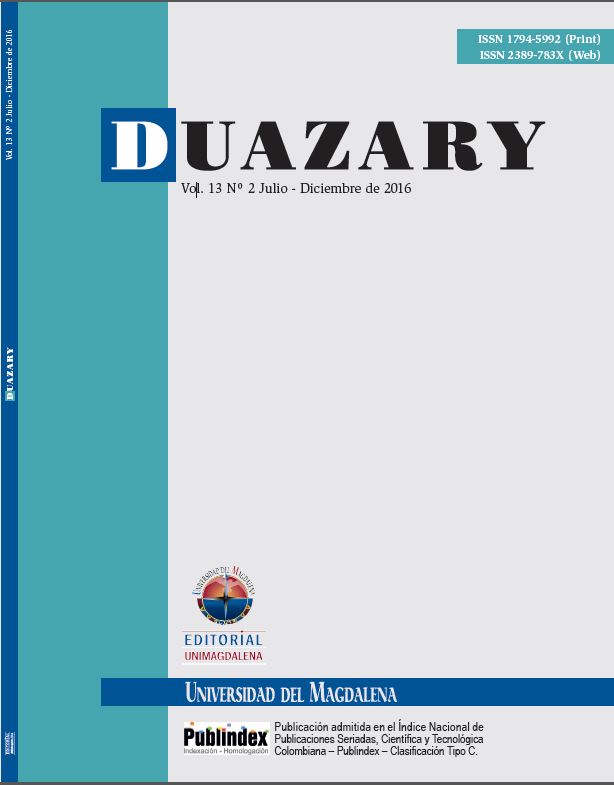Edad y recuento leucocitario como factores pronósticos en leucemia linfoblástica aguda: cohorte hgmla07
Contenido principal del artículo
Resumen
Con el objetivo de establecer la cifra de corte de leucocitos y edad con implicación pronostica en adultos con leucemia linfoblástica aguda (LLA), se efectuó un estudio observacional, descriptivo y analítico anidado en la cohorte retrospectiva de pacientes con LLA tratados mediante el protocolo institucional HGMLAL07 durante 2007-2014. Se estudiaron 255 pacientes, el 52.9% (n=135) correspondieron al género femenino y 47.1% (n=120) al género masculino. La media de edad fue de 31 (16-80) años. La supervivencia libre de la enfermedad (SLE) disminuyó en ambos géneros a partir de los 20 años (p=0.001). La media de leucocitos fue 56.1 x 109/L (0.1-850 x 109/L). La SLE disminuyó significativamente a partir de una cifra igual o mayor de 20 x 109/L (p<0.05). Con esto se puede concluir que emplear puntos de corte para leucocitos y edad obtenidos en poblaciones distintas pudiera condicionar una mala clasificación pronostica y un consiguiente tratamiento subóptimo.
Descargas
Detalles del artículo
No se permite un uso comercial de la obra original ni de las posibles obras derivadas, la distribución de las cuales se debe hacer con una licencia igual a la que regula la obra original.
Citas
Swerdlow SH, Campo E, Harris NL, Jaffe ES, Pileri SA, Stein H, et al., editors. WHO Classification of Tumours of Haematopoietic and Lymphoid Tissues. 4th ed. World Health Organization Classification of Tumours of Haematopoietic and Lymphoid Tissue. Lyon: International Agency for Research on Cancer Press; 2008.
Nath S V, Nicholson I, Tapp H, Zola H, Zannettino ACW, Revesz T. Reticulin fibres anchor leukaemic blasts in the marrow of patients with acute lymphoblastic leukaemia. Med Hypotheses. 2011;77(3):333–5.
Gökbuget N, Hoelzer D. Treatment of adult acute lymphoblastic leukemia. Semin Hematol. 2009;46(1):64–75.
Talpaz M, Shah NP, Kantarjian H, Donato N, Nicoll J, Paquette R, et al. Dasatinib in imatinib-resistant Philadelphia chromosome-positive leukemias. N Engl J Med. 2006;354(24):2531–41.
Sanford DS, Kantarjian H, O’Brien S, Jabbour E, Cortes J, Ravandi F. The role of ponatinib in Philadelphia chromosome-positive acute lymphoblastic leukemia. Expert Rev Anticancer Ther. 2015;15(4):365–73.
Portell CA, Advani AS. Antibody therapy for acute lymphoblastic leukemia. Curr Hematol Malig Rep. 2012;7(2):153–9.
Ai J, Advani A. Current status of antibody therapy in ALL. Br J Haematol. 2015;168(4):471–80.
Pui C-H, Carroll WL, Meshinchi S, Arceci RJ. Biology, risk stratification, and therapy of pediatric acute leukemias: an update. J Clin Oncol. 2011;29(5):551–65.
Chiaretti S, Vitale A, Cazzaniga G, Orlando SM, Silvestri D, Fazi P, et al. Clinico-biological features of 5202 patients with acute lymphoblastic leukemia enrolled in the Italian AIEOP and GIMEMA protocols and stratified in age cohorts. Haematologica. 2013;98(11):1702–10.
Hoelzer D, Thiel E, Löffler H, Ganser A, Heimpel H, Büchner T, et al. Risk groups in adult acute lymphoblastic leukemia. Haematol Blood Transfus. 1987;30:104–10.
Rowe JM, Buck G, Burnett AK, Chopra R, Wiernik PH, Richards SM, et al. Induction therapy for adults with acute lymphoblastic leukemia: results of more than 1500 patients from the international ALL trial: MRC UKALL XII/ECOG E2993. Blood. 2005;106(12):3760–7.
Wang H, Chen X-Q, Geng Q-R, Liu P-P, Lin G-N, Xia Z-J, et al. Induction therapy using the MRC UKALLXII/ECOG E2993 protocol in Chinese adults with acute lymphoblastic leukemia. Int J Hematol. 2011;94(2):163–8.
Larson RA, Dodge RK, Burns CP, Lee EJ, Stone RM, Schulman P, et al. A five-drug remission induction regimen with intensive consolidation for adults with acute lymphoblastic leukemia: cancer and leukemia group B study 8811. Blood. American Society of Hematology; 1995;85(8):2025–37.
Annino L, Vegna ML, Camera A, Specchia G, Visani G, Fioritoni G, et al. Treatment of adult acute lymphoblastic leukemia (ALL): long-term follow-up of the GIMEMA ALL 0288 randomized study. Blood. 2002;99(3):863–71.
Ramos C, Rozen E, León M, Martínez T A, Olarte I, Catellanos H, et al. [Results of treatment of acute lymphoblastic leukemia in two cohorts of Mexican patients]. Rev Med Chil. 2011;139(9):1135–42.
Jaso J, Thomas DA, Cunningham K, Jorgensen JL, Kantarjian HM, Medeiros LJ, et al. Prognostic significance of immunophenotypic and karyotypic features of Philadelphia positive B-lymphoblastic leukemia in the era of tyrosine kinase inhibitors. Cancer. 2011;117(17):4009–17.
Jiménez-Morales S, Miranda-Peralta E, Saldaña-Alvarez Y, Perez-Vera P, Paredes-Aguilera R, Rivera-Luna R, et al. BCR-ABL, ETV6-RUNX1 and E2A-PBX1: prevalence of the most common acute lymphoblastic leukemia fusion genes in Mexican patients. Leuk Res. 2008;32(10):1518–22.
Ganzel C, Rowe JM. Prognostic factors in adult acute leukemia. Hematol Oncol Clin North Am. 2011;25(6):1163–87.
Dores GM, Devesa SS, Curtis RE, Linet MS, Morton LM. Acute leukemia incidence and patient survival among children and adults in the United States, 2001-2007. Blood. 2012;119(1):34–43.
Sant M, Allemani C, Tereanu C, Angelis R De, Capocaccia R, Marcos-gragera R, et al. Incidence of hematologic malignancies in Europe by morphologic subtype: results of the HAEMACARE project. Blood. 2010;116(19):3724–34.
De França Azevedo I, da Silva Júnior RMP, de Vasconcelos AVM, das Neves WB, de Barros Correia Melo FC, Melo RAM. Frequency of p190 and p210 BCR-ABL rearrangements and survival in Brazilian adult patients with acute lymphoblastic leukemia. Rev Bras Hematol Hemoter. 36(5):351–5.
Hoelzer D, Thiel E, Löffler H, Büchner T, Ganser A, Heil G, et al. Prognostic factors in a multicenter study for treatment of acute lymphoblastic leukemia in adults. Blood. 1988;71(1):123–31.
Gokbuget N, Kneba M, Raff T, Trautmann H, Bartram C-R, Arnold R, et al. Adult patients with acute lymphoblastic leukemia and molecular failure display a poor prognosis and are candidates for stem cell transplantation and targeted therapies. Blood. American Society of Hematology. 2012;120(9):1868–76.
Van Zant G, Liang Y. Concise Review: Hematopoietic Stem Cell Aging, Life Span, and Transplantation. Stem Cells Transl Med. 2012;1(9):651–7.

